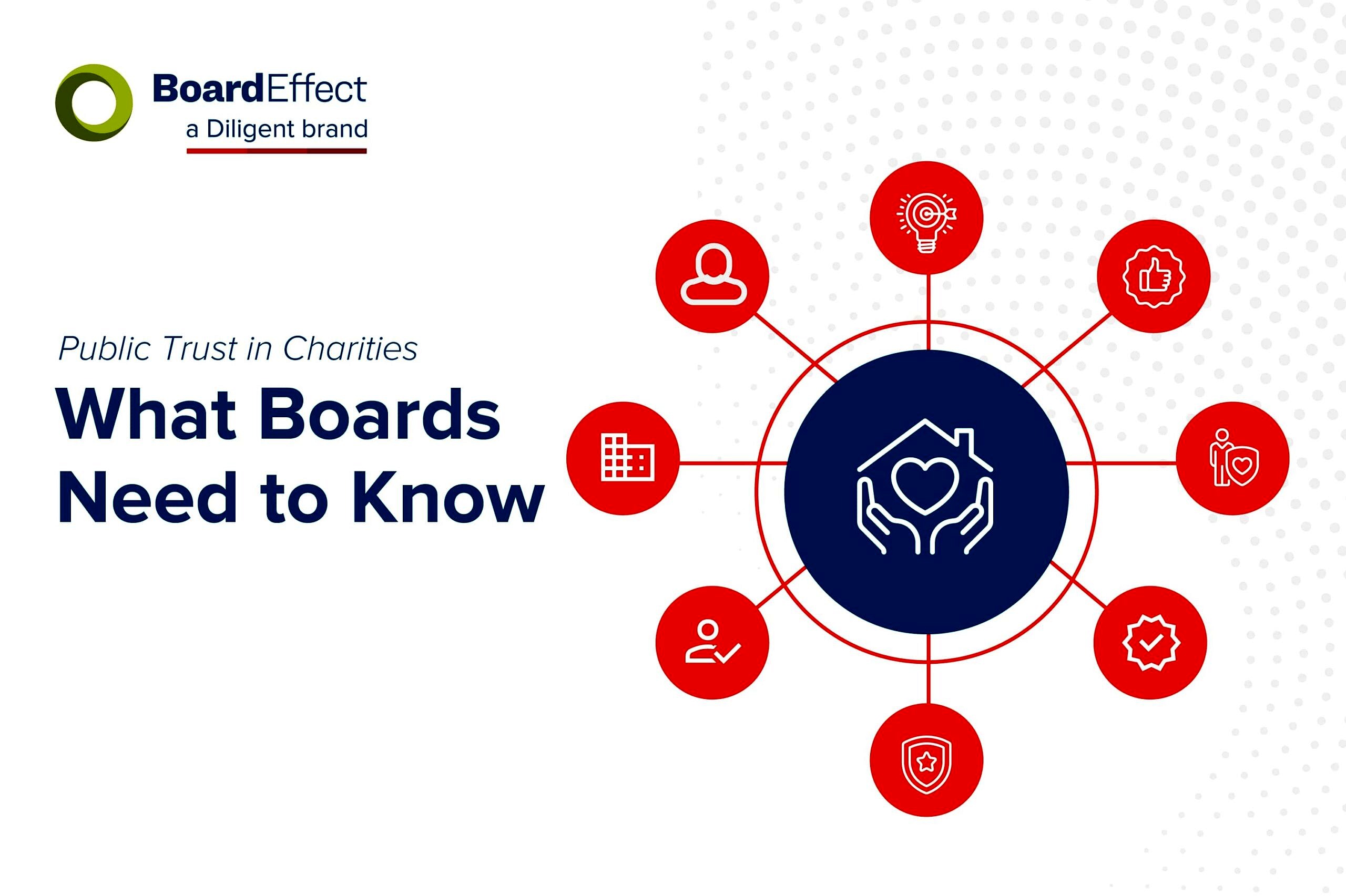
Expert Insights on Finding and Onboarding New Volunteer Board Members
Experts gathered to share their insights on board effectiveness at a recent webinar, “Finding & Onboarding the Right Board Members,” hosted by BoardEffect. Watch the full 30-minute webinar to find how your board can take a modern governance approach to bringing new trustees onboard.
Experts on the panel included Diarmaid Ó Corrbuí, CEO of Carmichael, a consultancy delivering training and support to the nonprofit sector, and Patrick Downes, Managing Partner of Lionheart Consultants, a leading Corporate Governance practice.
Led by BoardEffect Director of Sales Edward Rees, the panel discussed methods for finding the right volunteers to compliment your board, as well as best practices for onboarding your newest members.
Sharing insights from their experiences serving on boards, the panellists examined how to:
- Identify skill gaps in your current board
- Find the right volunteers for your board
- Onboard those new board members
Identifying Board Skills Gaps
Why is it important to identify skill gaps for your board? Patrick Downes points out that, “A board is only as good as the intellectual horsepower around the table. And that can, I suppose, sometimes get stale, and it needs to be refreshed.”
Many charities are now undertaking midterm competency and skillset reviews, where they look at the skills as opposed to the people around the table, do an audit of the skills, then have a look at their succession and rotation program in terms of who’s going to be rotating off the board next. This data can be used for recruitment, as you will have a template for what the ideal candidate looks like.
Ó Corrbuí adds that, “You may not be replacing like for like, and that skills audit is very important for looking at who you have around the table currently, but also who you might need in the future.”
He points out that this is a dynamic process, and recommends that organizations embed succession planning into their governance framework.
Having succession planning in place early on helps you identify and get where you need to be to attract the right candidate.
“You may not be replacing like for like, and that skills audit is very important for looking at who you have around the table currently, but also who you might need in the future.” – Diarmaid Ó Corrbuí, CEO of Carmichael
Strong Marketing and Clear Expectations
Marketing is critical, as it’s a very competitive market attracting new board trustees. Ask these key questions:
- How do we sell ourselves in the best possible way?
- Why would somebody put themselves forward?
- What’s the proposition?
- What kind of concerns might they have?
Think about how you make it as easy as possible for somebody to enquire, put themselves forward and enter the process.
Downes recommends creating a due diligence pack for candidates, including who the directors and officers are and liability insurance details, with key information front and center so people can see that they’re covered.
He emphasises that people are moving away from the excitement of joining a board to actually looking at what the implications are for themselves personally. So, you need to de-risk so they have a very clear understanding of what you expect from them. “It’s all about reputational risk at the moment in this space.”
Broaden the Search
Be as broad as you can during your search — don’t limit yourself to the same usual places.
Look at the role type and where those people could be found. For example, professional bodies might be a good source.
Use Your Committees
One suggestion by Downes is to use your committees to socialize with potential board candidates. While it would be standard to appoint one or two external experts onto your audit and risk committee, that’s not to say that you couldn’t do it on the other committees.
This allows you to deploy them and see how they perform, and offers them terms of reference, should they prove to be a prospective future board candidate: “You get to look over them and they get to look over you. That may prove to be a very fertile avenue in terms of future recruiting.”
Mentoring for Untested Candidates
If potential candidates don’t have prior board experience, don’t discount them. Mentoring can play a key role here. When a new board member joins, Downes recommends they have a mentor for the first three to six months — someone who is dedicated to giving them the steer on how things are done, as well as a sense of what the board is about.
After all, fresh thinking and “fresh blood” on your board can help bring diversity not only in its strict definition, but also diversity of thought. As Vernā Myers says, “Diversity is being invited to the party; Inclusion is being asked to dance.”
What You Need to Attract New Candidates
When asked what their advice would be on how to attract the high-quality volunteers that they’re looking for, Downes pointed to some key factors:
- Your website should be up to scratch. It’s your “shop window” and needs to be up to date.
- Your published reports should demonstrate your governance and compliance.
- Maintain rigorous communication so that candidates are kept in touch with in an open, transparent and friendly fashion.
“I suppose it’s a bit like a beauty parade. You need to put your best foot forward,” Downes says.
Ó Corrbuí adds that it’s also about going back to “the why” — i.e., being clear about who you are, what you’re doing, why what you’re doing is important, the benefits of being involved, and what difference you are making as an organization. Start communicating these things in simple terms, beginning with your website and newsletters, to get the word out there about the value of what you’re doing.
Onboarding Best Practices
When it comes to onboarding, Downes emphasizes that, “You have to set people up for success in terms of hitting the ground running. It happens really with that onboarding piece and that induction piece.” He recommends that charities and not-for-profits concentrate a lot of attention to that and give people a very robust induction and onboarding process.
Both Downes and Ó Corrbuí mentioned putting support structures around your onboarding and induction processes. They suggest offering a mentoring or buddy system and also having the company secretary be there to help the new trustee along. This support will help your new trustee get up to speed as quickly as possible. This can be customised to the needs of the organization, but also to the needs of the person you’re bringing onto the board.
Ó Corrbuí suggests thinking of onboarding process as taking up to 12 months and breaking up it into a series of event rather than doing an “information overload then ‘sink or swim’”. Consider when the new board trustee will meet their fellow board members, look at organising some kind of social event to introduce them to the rest of the board so they can get to know each other.
Watch the full webinar here to discover even more insights from the experts on finding and onboarding new board trustees for your not-for-profit organisation.
From organising board skills audits to profiling potential candidates to providing robust onboarding for new members, practising good governance is made easy when boards are supplied with the right tools.
If you would like to learn more about how BoardEffect can support your board, we’d love to speak with you! Request a demo and let us share how we help more than 14,000 boards in 48 countries.







